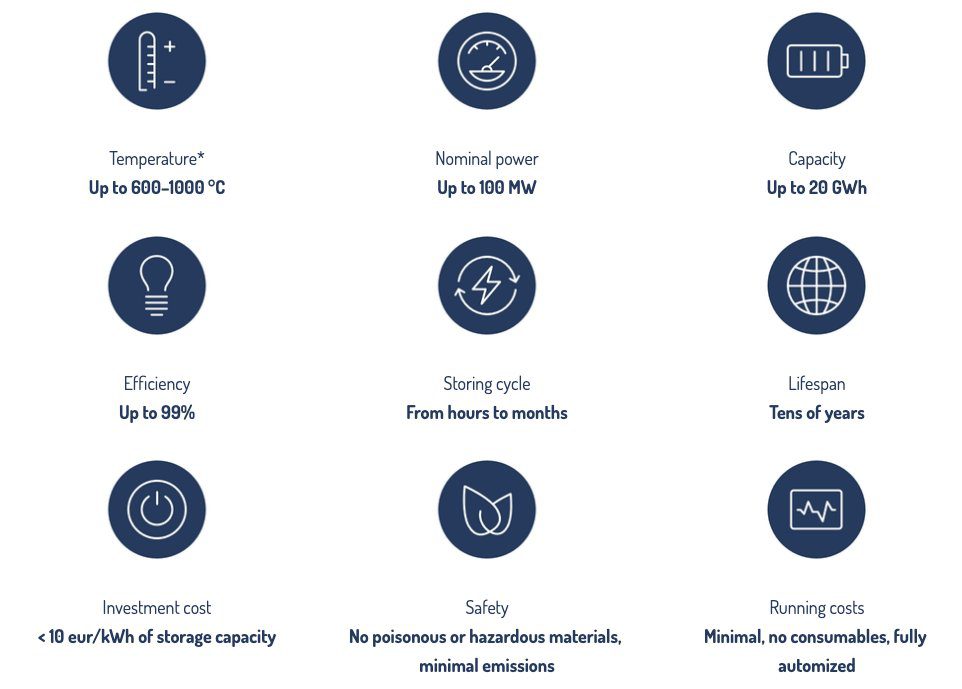I will never tire of repeating it: wind and solar are fine, but they are intermittent. You know that. They only generate energy when it is available, not when it is required. For this the energy transition will require the massive use of different storage systems, which will offer different solutions to different needs. Some will support the electricity grid during peak demand, others will help cope with seasonal drops in supply, and so on.
Eventually, one or more technologies will emerge gradually. Batteries with melted salt? Large “conventional” batteries lithium-based? The batteries a severity? Or many others… Who can say. Now there is also a solution... to sand.
Polar Night Energy, the world's first commercial battery to use sand
The Finnish company Polar Night Energy has just announced that it has started the world's first commercial battery that runs on sand. You read that right. It is located in the locality of Vatayankoski, a few hours from Helsinki.
It is a thermal energy storage system built around a steel tank approximately 4 meters (13,1 feet) wide and 7 meters (23 feet) high. What's inside? I told you: sand. When this sand is heated using a simple heat exchanger buried in the center, this device can store well 8 megawatt-hours of energy, with a nominal power of 100 kW. The sand inside reaches a temperature between 500 and 600° C (between 932 and 1112 °F). When needed, the energy is extracted again in the form of heat.
Vatajankowski uses this stored heat to power the local district heating system that reaches buildings, swimming pools, industrial processes, and any other situation that requires heat.
Does this process work?
Of course. And the society defines it also extremely efficient. “It's really easy to convert electricity into heat,” he says Markku Ylonen, CTO of Polar Night. The company claims an efficiency factor up to 99%, a capacity to store heat with minimal losses for months and a duration of decades.

What's the secret? Nobody. There's nothing special about the sand: the company says it just needs to be dry and free of combustible debris. Installation costs are less than 10 euros (US$10,27) per kilowatt hour and it works in a fully automated manner.
What are the next steps?
The company will build even larger new facilities, with installations of approximately 20 gigawatt-hours of energy storage that produce hundreds of megawatts of rated power and heat sand to 1.000°C (1.832°F).
It is fair to say that this system will only be widely used in areas with district heating. But nearly half of all Scandinavian homes incorporate some form of it, and such systems are also found in China, or the US.
This will be enough to reduce emissions, according to stime developed by Mission Innovation, of approximately 57-283 megatons of CO2 per year by 2030.
A true North Star, guiding us towards a cleaner future.


